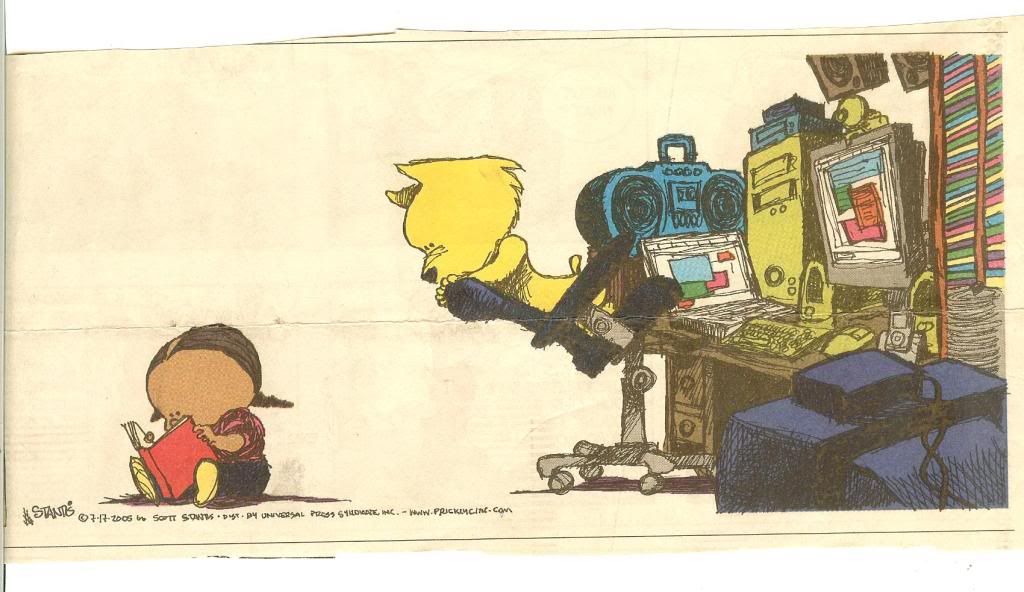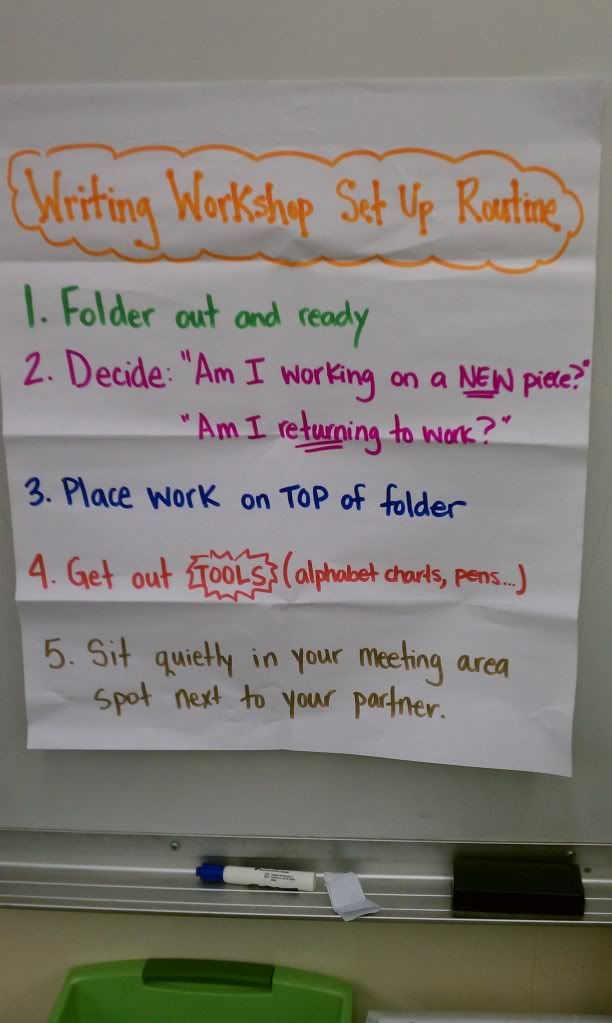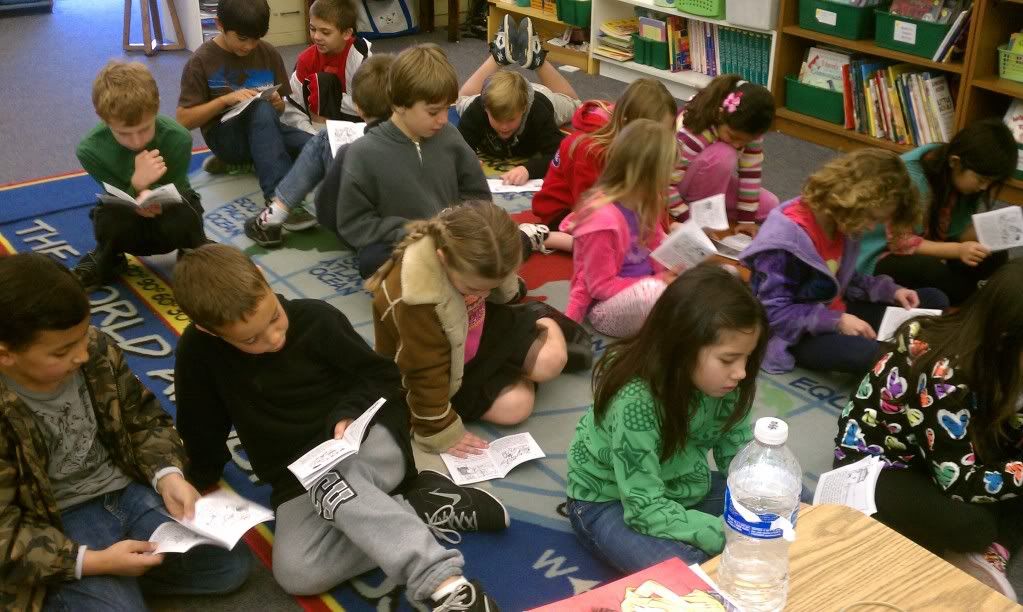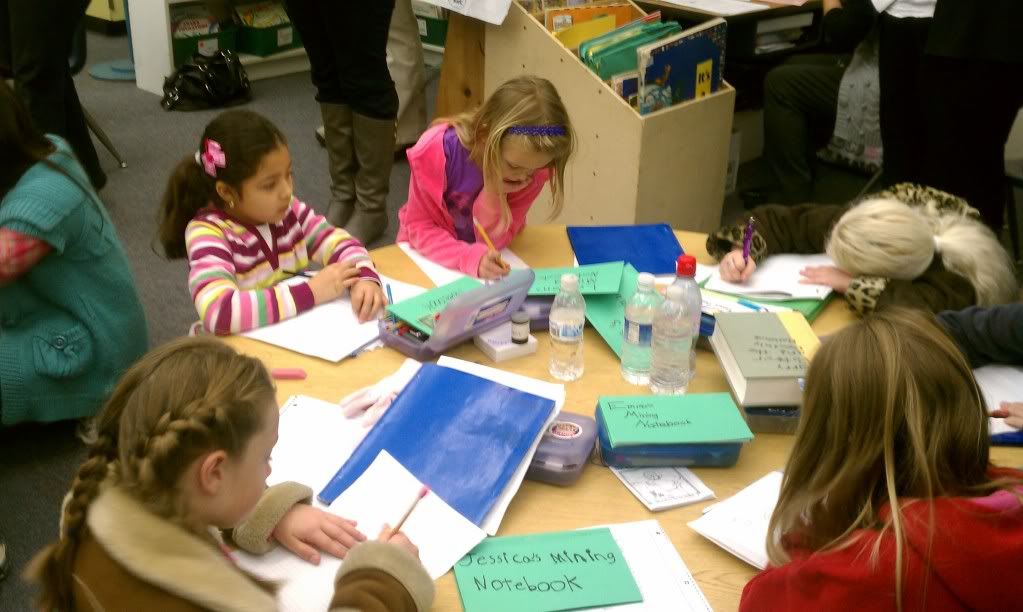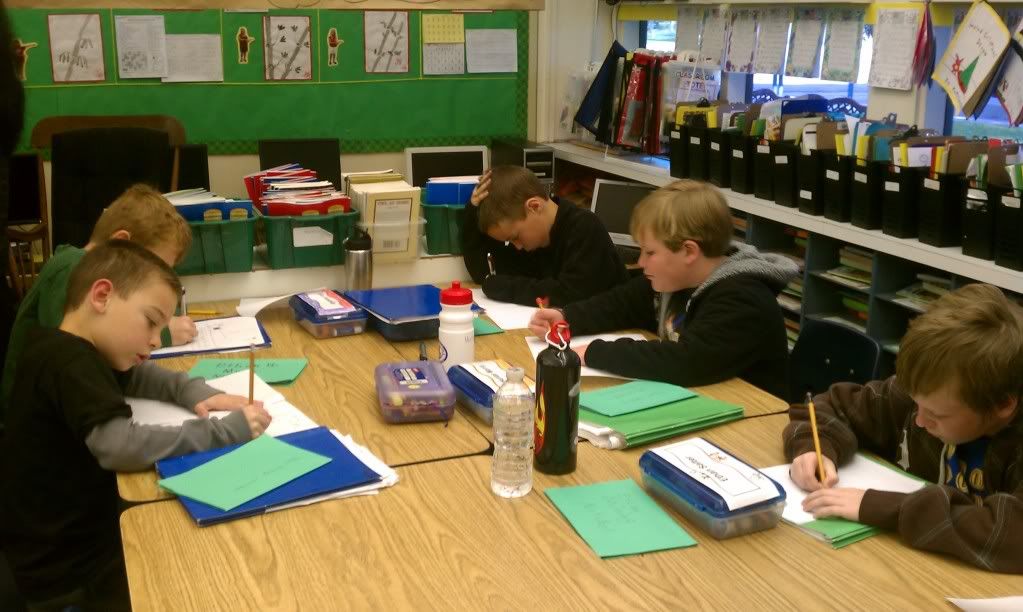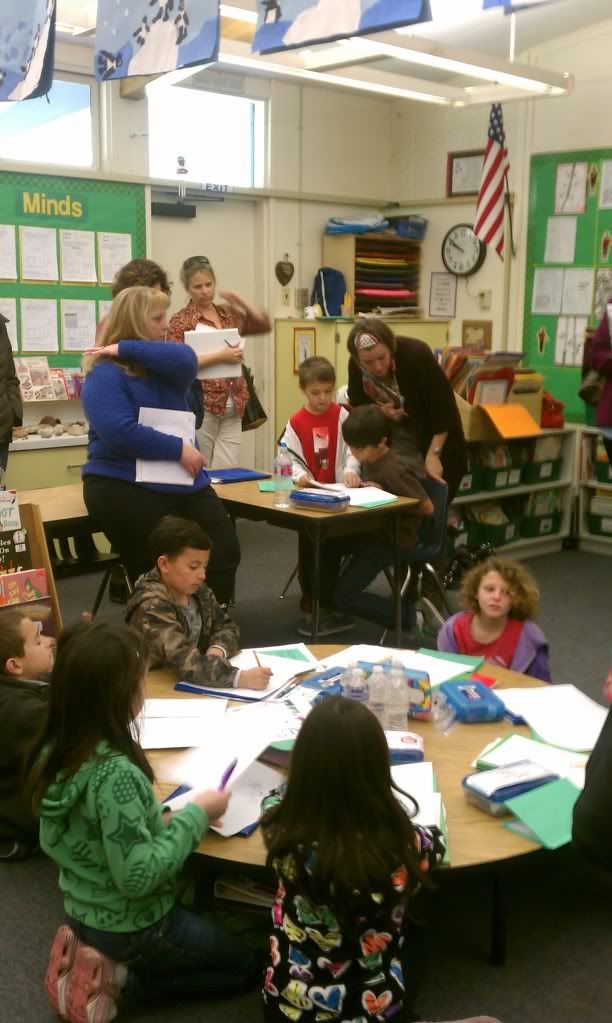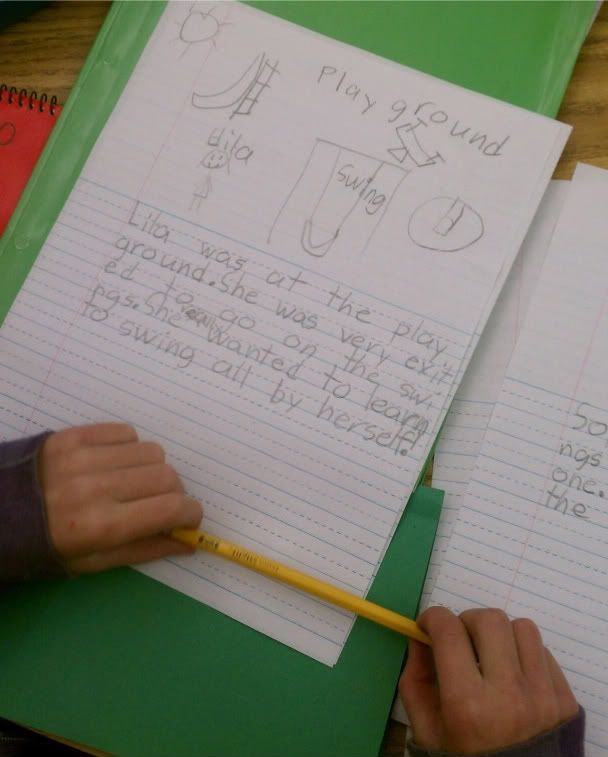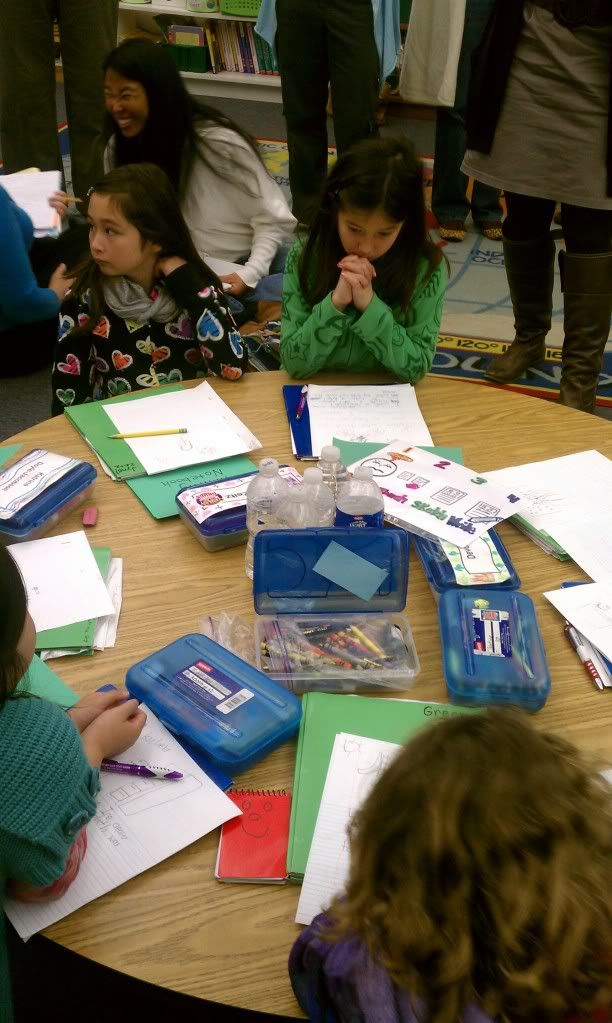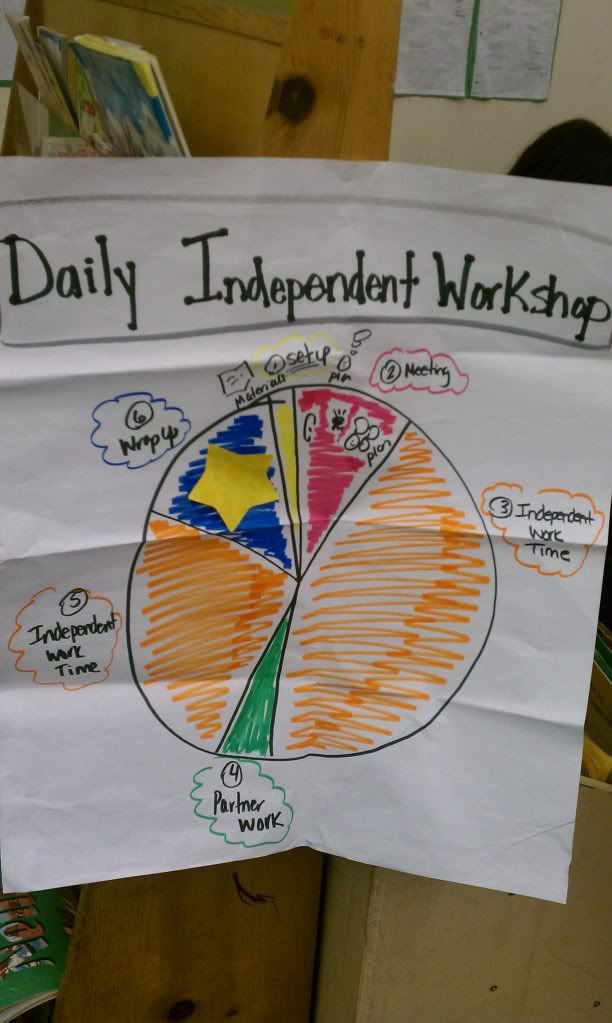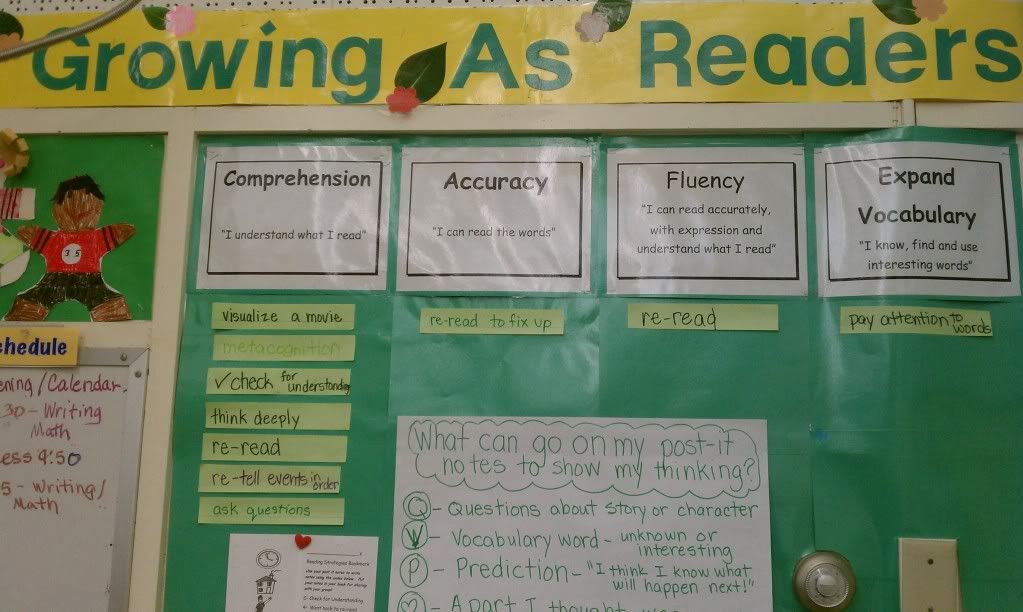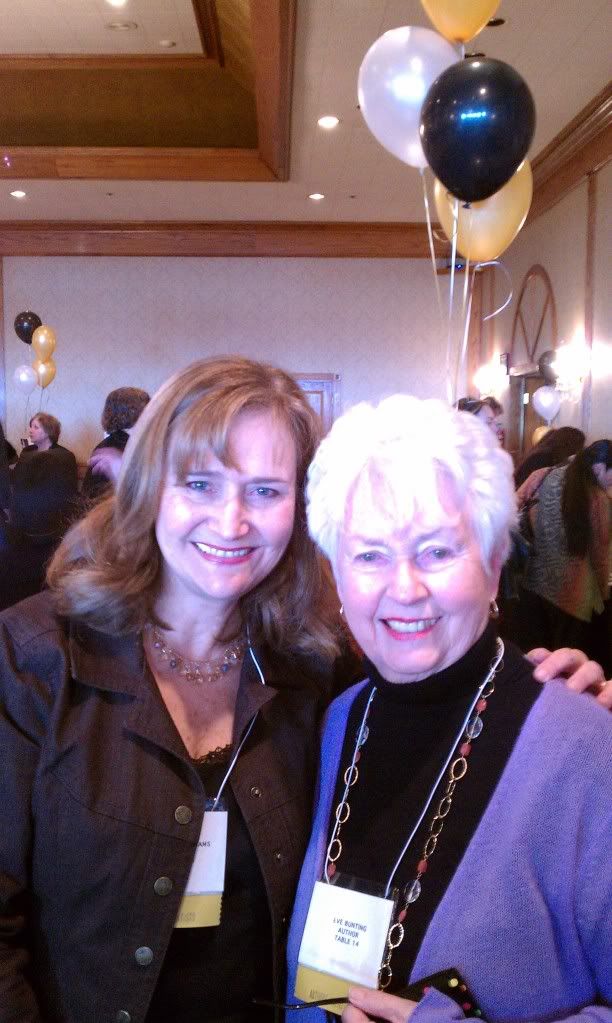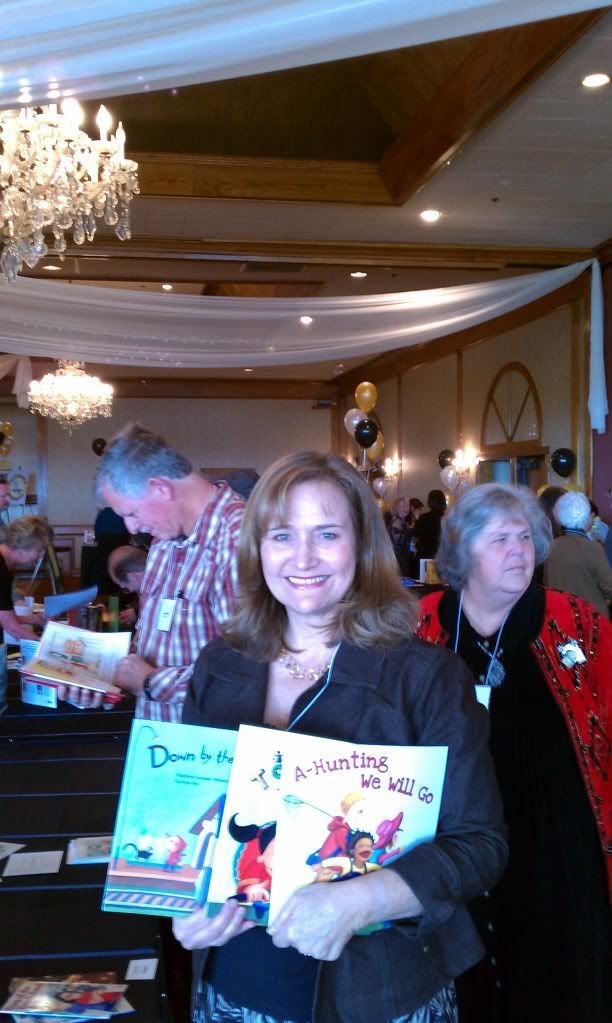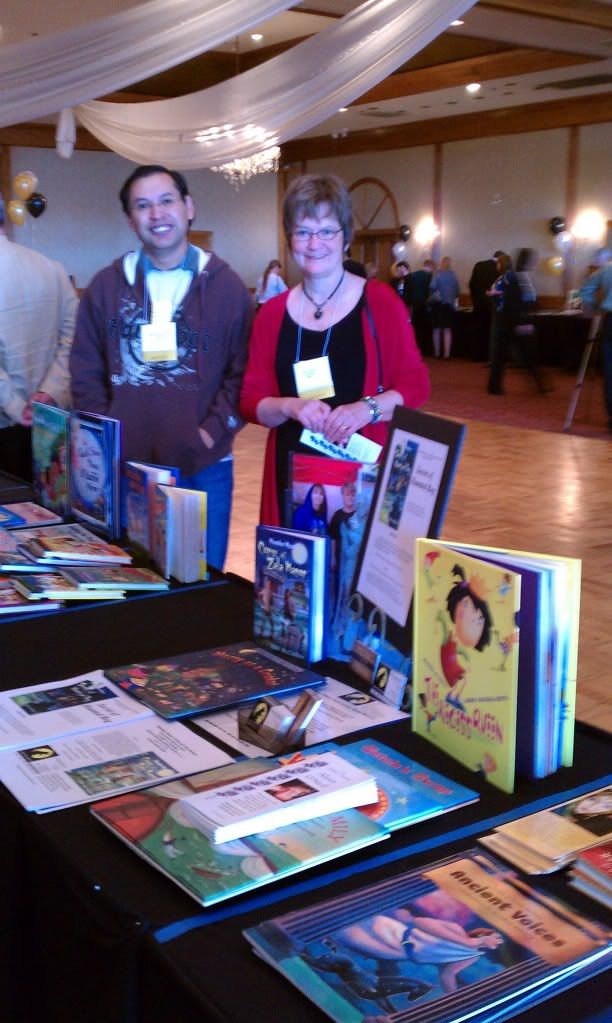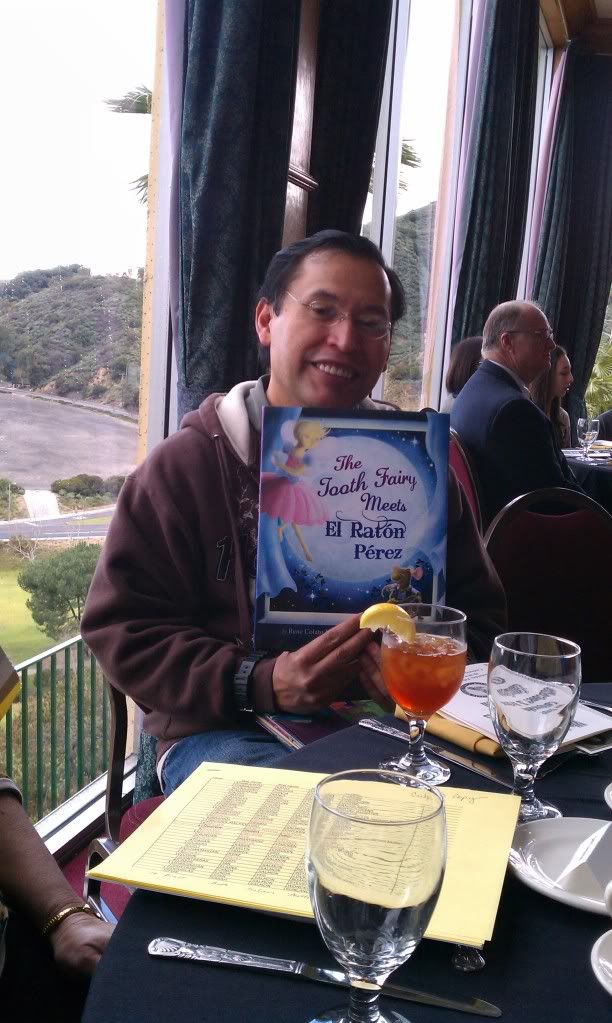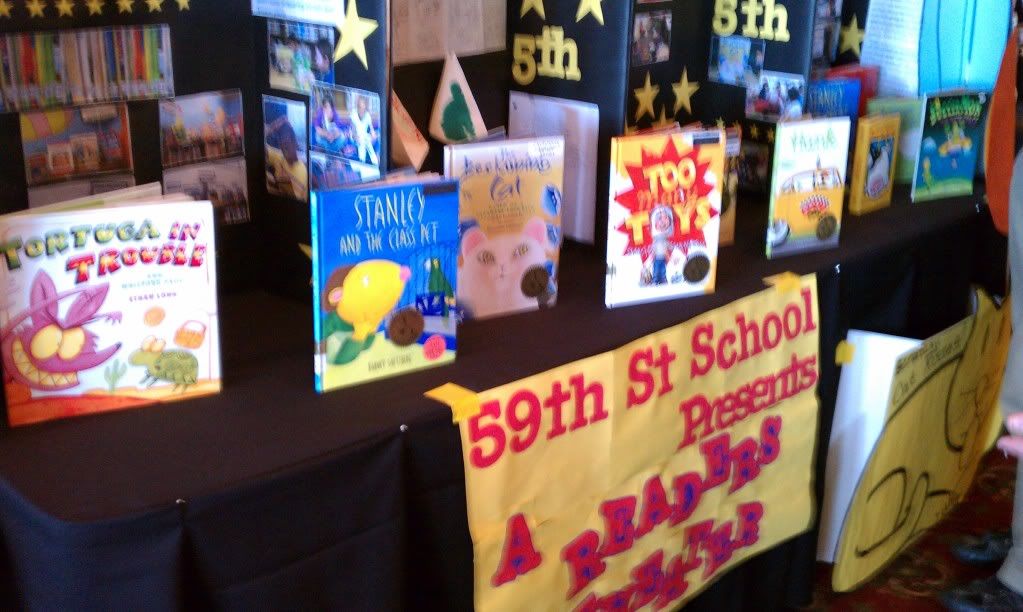Thursday, March 31, 2011
Monday, March 28, 2011
Getting Set for Writer's Workshop
Above is one more photo I'd like to share with you from my recent visit to a 2nd grade Writing Workshop in action. Consultant Renee Houser from Growing Educators, who was working with students, tacked up this poster. The set-up routine gets young writers ready, puts them in the right mind-set, and helps them focus on what they will be working on. I love the way this routine sets the expectation that serious writing will be taking place in this session!
Here's more from Renee Houser's hand-out:
Create rituals and routines around notebook work
such as:
* At the beginning of every writer's workshop, have students edit at least one entry as they sit and wait
for classmates to settle in the meeting area before the mini-lesson begins.
* Interrupt students in the middle of the independent work time and challenge them to accomplish a 'quick edit' (you might want to focus each quick edit for something specific each time such as: end marks, capitalization, word wall words, etc.).
* Provide time for students to reflect on their own note-booking. Perhaps they share their reflections and goals with their partners. Example: I date each entry. I fill the page margin to margin with my writing. I use my writing notebook only for writing. I tend to use ____ as a strategy because ____ .
* Building time during a 1:1 conference to invite students to share their notebook work and goals.
* Establishing some non-negotiables for notebooks such as: All entries are dated. Writing should be from margin to margin, etc.
Next, I will be blogging on one of my favorite subjects:
Book-making with beginning readers and writers. Stay tuned!
Monday, March 21, 2011
Becoming an independent writer. . .
As a continuation of my previous blog posting, I'd like to share some ideas
from writing consultant Renee Houser:
"We can live wide-awake writerly lives and capture these moments in our writing notebooks by:
- Writing about things that matter to you, you feel strongly about or perhaps want others to change or think about. . . let your voice be heard!
- Searching for an object on your body or in your surroundings that may spark a memory
- Time-lining part of your day
- Observing people, places, sounds. . .
- Collecting words, phrases, or parts of texts
- Rereading old entries and find more to say
- Rereading old entries in a way that it sparks a new or different memory
- Sketching a place and then write about it
- Making a list of things you want to write about, pick one and start writing
- Being inspired by photographs or artifacts
- Making a list of questions or wonderings and then search for answers or other questions and thoughts
- Saying it better. . . reread an entry and find a line or phrase you think you wrote well and write it again, better, clearer . . . "
Thursday, March 10, 2011
Scenes from 2nd Grade Writing Workshop
I was invited to my friend Renee Keeler's 2nd grade classroom to observe a model lesson (along with all the 2nd grade teachers in the district) with consultant Renee Houser. She trained with Lucy Culkins and is with a group called "Growing Educators." All the teachers met with Renee H. first, but there was a mix-up with the subs, so I, having a credential, volunteered to take over for a half hour. I read a biography of Dr. Suess, then the students read a version on their own. Notice the level of engagement. Loved it!
Here's Renee Houser, above, conferencing with a table of writers.
Renee's class is set up for "The Daily Five," so you can see lots of "busy brains" in the following photos.
This story is off to a great start! Notice how this child planned the story by drawing a picture first.
Renee Houser demonstrated how she uses a graph, below, to show how writing workshop time is divided. This is on display and referred to often. The sticky note star is moved to each section. Time is allowed for: Set Up (materials), Meeting (planning, mini-lesson), a big chunk of Independent Writing Time, Partner Work, more Independent Writing Time, and Wrap-UP.
Scenes from the classroom. I love the self-portraits and the Daily Five Posters.
Thursday, March 3, 2011
Scenes from CA Readers Luncheon on Feb. 26th, 2011
Thursday, February 24, 2011
California Readers
I will be attending the 15th Annual California Readers "We Love California Authors & Artists Luncheon" Saturday in Burbank. Below is a link to my interview posted on their site. This organization is a great way to connect with local writers and illustrators. Susan Patron will be keynoting and the Leo Politi Golden Author is Jerry Stanley. I went last year for the first time and really enjoyed meeting up with other authors and lots of library and school personnel.
Click on this link to find out how I got the ideas to write these books.
www.californiareaders.org/interviews/williams_rozanne.php

Click here to read this book.

Read this book inspired by my daughter, Laura

Click here to read a book written and illustrated by Mrs. Keeler's 2nd graders!
Click on this link to find out how I got the ideas to write these books.
www.californiareaders.org/interviews/williams_rozanne.php

Click here to read this book.

Read this book inspired by my daughter, Laura
Click here to read a book written and illustrated by Mrs. Keeler's 2nd graders!
Tuesday, February 15, 2011
Keep Reading on Track with Fun Pointers
I received a little package in the mail containing a collection of fun reading pointers. It was from my friend, Luella Connelly, who just happens to be the founder of Creative Teaching Press. Not one to really retire, she is currently volunteering at an elementary school. She is working on reading with six children. They have trouble tracking, so in addition to using their fingers, she made them some cute pointers. Some are tied to the themes of the books they are reading. Pointers are easy to make. Just start with craft sticks, any size, and glue on buttons, wiggly eyes ("Keep your little eye on the words!"), puffy stickers and other fun stuff.
Why is tracking important?
When beginning and remedial readers track words, it helps engrain necessary left-to-right processing, helps them keep their place, and notice all the sounds.
" Poor readers have frequent tracking errors where they improperly process letters out of order. They often exhibit erratic eye movement as they look around for 'whole words' or jump around searching for familiar chunks or word families. These incorrect tracking strategies contribute to reading difficulty."
---M. Gagen www.righttrackreading.com/tracking.html
Also, by tracking as they read, beginning readers are connecting spoken words to written words. Many books they read on this level have repeated text that children easily memorize. Sometimes children finish "reading" the book but they still have some pages leftover! By tracking with their fingers or fun pointers, their attention is focused on the text.
Why is tracking important?
When beginning and remedial readers track words, it helps engrain necessary left-to-right processing, helps them keep their place, and notice all the sounds.
" Poor readers have frequent tracking errors where they improperly process letters out of order. They often exhibit erratic eye movement as they look around for 'whole words' or jump around searching for familiar chunks or word families. These incorrect tracking strategies contribute to reading difficulty."
---M. Gagen www.righttrackreading.com/tracking.html
Also, by tracking as they read, beginning readers are connecting spoken words to written words. Many books they read on this level have repeated text that children easily memorize. Sometimes children finish "reading" the book but they still have some pages leftover! By tracking with their fingers or fun pointers, their attention is focused on the text.
Subscribe to:
Posts (Atom)

